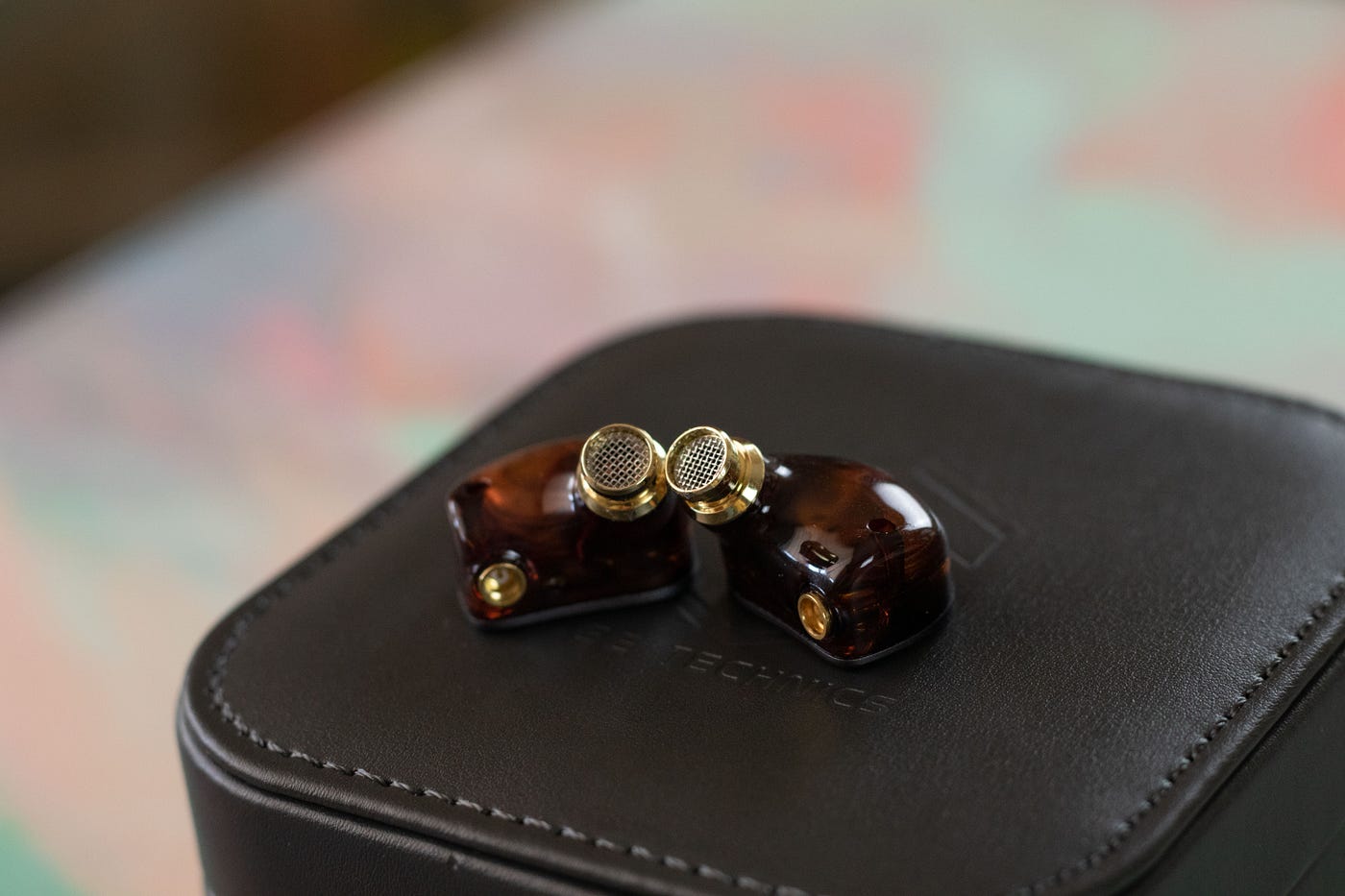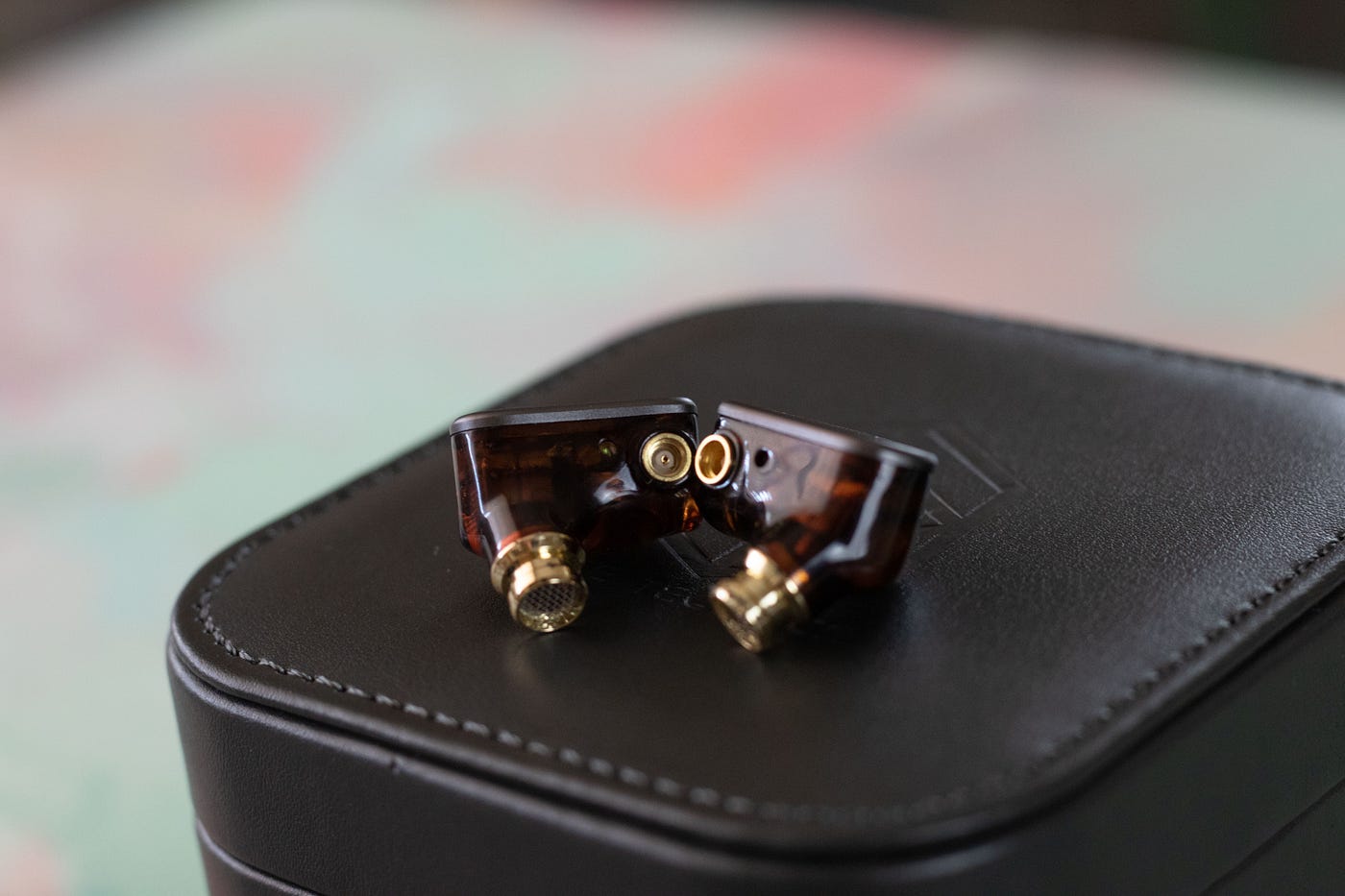ChiFi Review: Rose Technics QT-9 MK3
Third Time’s the Charm
Rose Technics has been around for quite a while. In that time, they’ve experimented with a wide range of driver configurations for their IEMs, usually with a hybrid twist. The QT-9 is a staple of the Rose lineup, doggedly sticking it out for 5 years and
four revisions. Today we’re listening to the QT-9 MK3 — the most modern revision to Rose’s 5-driver hybrid IEM.
You can find the QT-9 MK3 for sale on the
official Rose Technics AliExpress Store here, for $169.
Be careful, there are multiple stores with Rose Technics in the name. The one you want is called
Rose Technics Certified Store.
You can also find it for sale
here, on the official Rose Technics web store, also for $165.
About My Preferences: Heads up, I’m a person! As such, these words are my opinion, and they are tinged by my personal preferences. While I try to mitigate this as much as possible during my review process, I’d be lying if I said my biases are completely erased. So for you, my readers, keep this in mind:
- My ideal sound signature would be one with competent sub-bass, a textured mid-bass, a slightly warm midrange, and an extended treble.
- I have mild treble sensitivity.
Source: The QT-9 MK3 was tested in the following configurations:
- LG V40 -> earphones
- Asus Zenphone 10 -> USB-C -> Rose Technics RS9039 -> Earphones
- Dell XPS 15 (2022) -> USB-C -> Rose Technics RZ200 -> Earphones
- Hidizs AP100 3.5mm out -> FiiO A5 3.5mm out -> earphones
- HiFiMAN SuperMini -> earphones
All music was served as MP3 @320Kbps or as FLAC.
Tech Specs
- Drivers: 1x Dynamic Driver (3rd Gen Rose DD), 4x Balanced Armature Driver (2x 26UA, 2x Knowles 30017)
- Impedance: 18 Ohms
- Sensitivity: 104dB
- Frequency Response: 20Hz -20KHz
- Cable Length: 120cm +- 5cm
- Cable Type: OCC Single Strand
- Cable Termination: 3.5mm
- Detachable Cable Standard: 2-pin or MMCX
- Weight: 30g +- 5g
Sound Signature
Sonic Overview:
The QT-9 MK3 features a smooth and refined sound signature with mainstream appeal. It has an elevated bass and treble with a technical midrange spike around 2–4KHz. The QT-9 MK3’s U-shaped sound profile makes it an easy listen, with a medium-sized sound stage and believable layering. The QT-9 MK3’s bright treble and light upper midrange feel precise, but somewhat mechanical in tone.
Sonic Breakdown:
Treble: Songs used:
In One Ear,
Midnight City,
Outlands,
Satisfy,
Little One,
Show Me How To Live (Live at the Quart Festival),
Fall (Big Black Delta Remix),
Bittersweet Symphony
The QT-9’s treble is bright and formal. It attacks and decays quickly and precisely, deriving its transient nature from the two balanced armature drivers tasked with treble production. The QT-9’s bright and reflective treble tone allows it to excel in electronic genres.
Fall (Big Black Delta Remix) was a pleasure to listen to, with the QT-9 playing nicely to the contrasting vibes of angelic falsetto vocals thrown into a chaotic digital landscape.
I was able to clearly make out the electronic crackling and subtle buzzing of the amps during the intro and outro of
In One Ear, owing to the QT-9’s sensitive and revealing treble tuning. Other treble-bound details such as the sounds of the vocalist inhaling were cleanly captured and staged. High hats audibly decayed, though not with the most organic sensation.
While it is certainly bright, I did not find the QT-9’s treble to ever be sibilant. However, at higher volumes, especially in thinly-mastered songs such as
Satisfy, the treble did come across as hot — something I avoided by listening exclusively at low and medium volumes.
While there’s multiple positives with the QT-9’s treble, it isn’t perfect. Treble-heavy tracks with highly-layered instrumentation, such as
Bittersweet Symphony, exhibit treble-detail blurring. Reducing volume can mask this behavior, but it is present, likely as a side-effect of the up-tight tuning of the treble driver.
Midrange: Songs used:
Flagpole Sitta,
Jacked Up,
I Am The Highway,
Dreams,
Too Close,
Little Black Submarines
I had expected the QT-9’s U-shaped sound signature to have more of an effect on it’s midrange presentation, but in practice, the QT-9’s midrange doesn’t feel recessed or buried. It is particularly competent when resolving vocals — likely due to its 2–3KHz spike. Male and female vocals are both resolve nicely, with female vocals having a slight advantage. They have a sweet, honey-like timbre. Male vocals are portrayed with a fairly neutral tone. Vocal intelligibility is within my expectations for this price-point, with the QT-9 delivering palatable vocal clarity in most of my songs.
Among all the songs I tested, I found myself enjoying those that made heavy use of acoustic instrumentation the most. The strumming and plucking of guitar strings in
I Am The Highway had a believable texture that kept drawing me further into Chris Cornell’s lonely ballad. The same can be said for the acoustic features of the intro to
Little Black Submarines. Even through The Black Keys’ low-fi mastering technique, the QT-9 delivered an excellently-textured and realistically staged acoustic guitar performance.
Bass: Songs used:
Moth,
Gold Dust,
In For The Kill (Skream Remix),
War Pigs (Celldweller Remix)
The QT9’s bass features a dedicated dynamic driver, and it shows. Its bass is full and impactful, often having enough presence to create a satisfying rumble. Electronic music benefits greatly from the QT-9’s elevated bass tuning, with the busy and messy bass lines of
Gold Dust being delivered with a tactile punch and robust rumble.
The bass-soaked conflict and angst of
War Pigs (Celldweller Remix) comes through with energy and intent via the QT-9 hybrid array, leaving the listener fully immersed. The QT-9’s ability to produce sub-bass shines through on this track — it’s an impressive trait that is hard to find. Even harder to find is an IEM with this level of rumble that does not compromise the greater sound signature and remains cohesive with the mid-bass.
The QT-9’s mid-bass is tight and well-controlled. Songs with highly active bass-bound instruments such as
Moth with its bass guitar are portrayed with a coherent and cathartic weight. The QT-9’s mid-bass, while strong, does not blur bass details or overwhelm its lower-midrange. In fact, there were no songs I tested that suffered from the QT-9’s strong bass presence — an excellent sign for bass enthusiasts.
Packaging / Unboxing
The QT-9 MK3 shares packaging with the QT-X. Opening the box is easy, and the packaging feels weighty and premium. No complaints on my end.
Build
Construction Quality
The QT-9 is constructed from simple, light materials. Its shells are made from plastic, as are its faceplates. The shells are transparent, and the QT-9’s many drivers are clearly visible within.
Unlike its shells, the QT-9’s nozzles are made from a polished metal finished with a brass-colored plating. Just below the outer lip of the nozzles lies a metal debris mesh. To my eyes, this nozzle assembly is
also shared with the QT-X.
Rose Technics sells two varieties of the QT-9: MMCX and 2-pin. While my preference is always 2-pin, it was sold out when I ordered my unit, so I had to go with MMCX. Rose sticks with high-quality MMCX sockets, and as such, they have minimal “spin” when a cable is seated in them (a good sign for long-term durability). I own multiple Rose IEMs from 2016–2018 that all use MMCX, and none have degraded or failed. I imagine the QT-9 will be similarly robust as time passes.
The QT-9’s cable is well-built. It features a simple 2-strand braid coated in a tough nylon-like material. The 3.5mm jack, Y-splitter, chin-cinch, and MMCX terminations are all housed in black plastic. I do, however, wish that the cable had a little less shape memory. It can be tedious to un-twist the cable above the Y-splitter, particularly if the cable-guides have gotten mixed up.
While the cable’s fittings are all fairly standard, they’re tried-and-trued. A super-fancy cable is always welcome, but not at the expense of the integrity of the overall product; a concept Rose clearly understands. To that end, the QT-9’s cable is utilitarian — highly functional, durable, and comfortable, without being frivolous.
If you want to move up to a higher-tier of cable, you can do so by simply ordering any aftermarket MMCX cable — they should all be compatible.
Comfort
Disclaimer: comfort is a highly individual metric — no two people will have the same experience. With that in mind, Rose claims to have explicitly optimized the QT-9 MK3’s shell for the archetypal Asian ear shape. While I’m not entirely sure what that entails (beyond gathering lots of measurements from an exclusively Asian population), it doesn’t seem to have negatively affected fit for me as a standard-issue white guy.
The QT-9’s shells are relatively small and very light. As such, they were very easy to fit into my ears. The nozzles are standard width, but a little short, preventing me from getting a deep seal with the silicone eartips. Average seal performance aside, I was able to use the QT-9 all day without irritation or soreness, all with the stock cable and eartips.
Accessories
Rose includes quite a few accessories with the QT-9. Inside the box, you’ll find:
- 1x pair of low-profile foam eartips
- 1x pair of dual-flange eartips
- 7x pairs of silicone eartips
- MMCX puller
- USB-C DAC
- Spare debris filters
- Carrying case
The massive variety of eartips was extra helpful with finding a comfortable fit for the QT-9’s relatively shallow profile. They feel high-quality in the hand and comfortable in the ear. It would be nice if Rose included a variety of foam eartip sizes, but that’s not a deal breaker when I can just order some Comply eartips off of Amazon.
The included USB-C DAC is an excellent utility in today’s age of single-port cellphones and laptops. The RZ200-m performs well with the QT-9 MK3, and other low-impedance IEMs. It has a low noise floor and is widely compatible with all of my devices, including multiple Windows 10/11 devices, Android 11, 12, and 14 phones, and an iPhone 15.
The included carrying case is decent, but lacks an affirmative locking mechanism. Instead, it closes using a low-strength magnet and friction. It is totally suitable for static storage at home, but it is not ideal for transporting IEMs in a purse or backpack when it could fall open. The case is, however, roomy and has a great net for storing accessories. I’d still like to see Rose iterate on this case and provide buyers with a more secure offering.
While traveling with the QT-9 MK3, I actually went back to an old-school
plastic clasping case Rose included with their IEMs back in 2017.
Comparisons
1:
Rose Technics QT-X ($439 in 2024)
The QT-X has a warmer, weightier midrange. Its treble is less forward than the QT-9 MK3's, as is its bass. The QT-X contrasts the QT-9’s U-shaped tuning with a more “organic” W-shaped sound signature that prioritizes the integrity of the midrange. The QT-X is not an “upgraded” QT-9, but rather an entirely different IEM with unique tuning and a separate style.
Treble is a toss-up, falling to one IEM or the other depending on your preferences and priorities. The QT-9’s treble is far more forward giving it a brighter presentation than the QT-X. The QT-X’s treble, while more relaxed, tends to resolve fine details better and more flexibly, especially in scenarios where the upper register is particularly busy.
The QT-9 has a much more forward bass and is certainly going to be the preference for bass-heads. The QT-9’s willingness to punch and rumble goes far past the QT-X, with the QT-X only showing the same tactile behavior at higher volumes or in songs mastered with rumble as an explicit goal (see
Baby Got Brapp).
The QT-9’s sound stage is medium in size, making it slightly narrower than the QT-X. They are both capable of layering, with the QT-9’s cooler tuning giving it the occasional edge in “slow” and “empty” songs. The QT-X tends to pull ahead in busier songs with higher technical demand, particularly when there are many contrasting midrange textures.
2:
Simgot EN700 Pro ($150 in 2020)
The EN700 Pro is basically a more linear version of the QT-9. It has a slightly more cohesive presentation with an organic treble-to-midrange pairing. It has a less emphasized mid-bass and treble, with slightly worse extension that the QT-9. Both IEMs tout a strong bass presence, though the EN700 Pro rolls off earlier at around 50Hz. The EN700 Pro’s less dramatic V-shaped tuning will appeal more to those who want a “cleaner” sound signature. Simgot leveraged single dynamic driver well, though its limitations are a little more obvious when assessing its sub-bass and upper-treble extension. The QT-9 can push further in both extremes of the sound signature and claims some subtle advantages in delivering detail and impact as a result. There’s no clear winner between these two IEMs, and listeners will likely have to listen to both to determine which one suites their preferences better.
3:
Whizzer KYLIN A-HE03 ($150 in 2019)
The KYLIN is an old-school ChiFi hybrid IEM. It features a single dynamic driver and a single balanced armature driver. At less then half of the drivers in the QT-9, the KYLIN does a shockingly-good job competing. It has a V-shaped sound signature with a pronounced bass and extended upper-treble. It features a warmer sound signature than the QT-9 with a bloomier and less controlled mid-bass. It trades blows with the QT-9 in the upper register, with the QT-9 occasionally staging quiet background details better. The KYLIN, however, has a more organic and less strained treble.
Listeners who want a warmer, smoother sound signature will gravitate towards the KYLIN. That said, bass-heads will likely stick with the QT-9 and its superior bass performance, both in terms of mid-bass punch and sub-bass rumble.
Summary
The QT-9 MK3, while great at many things, is not a perfect IEM. But, at its relatively low price point, I don’t expect it to be. Rose went all out with its bass, giving it one of the most impressive lower-registered I’ve heard to date from a sub-$300 IEM. Rose’s accessory package is similarly great — but again, not perfect. Some small tweaks to the case and wider variety of foam eartips would solidify it as having the most comprehensive accessory packages I’ve seen.
The QT-9 MK3 is, for it few faults, still a fantastic and highly competitive IEM, particularly for listeners who want V-shaped IEMs with visceral and impactful bass performance. Great job Rose — I can’t wait to see what the Rose QT-9 MK4 sounds like!
As always, happy listening!

























